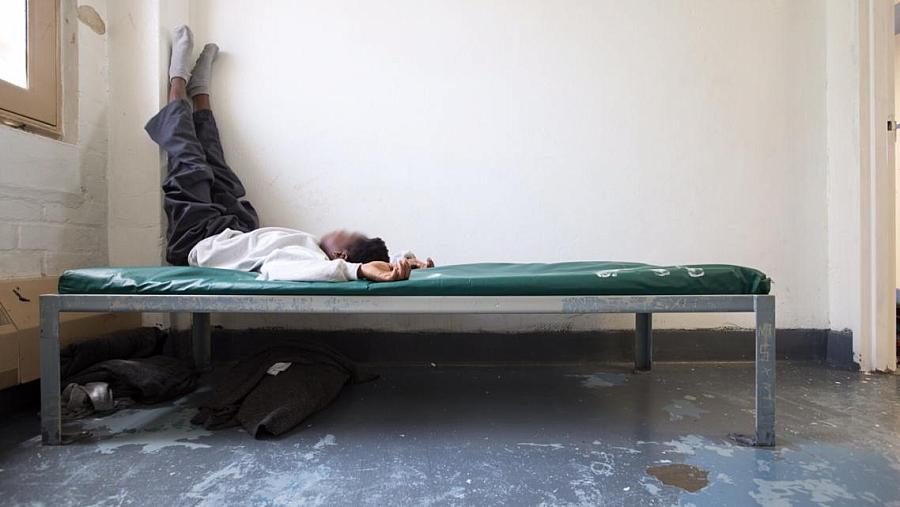California’s state youth prisons permanently close this June. Are counties ready?

Central Juvenile Hall in Los Angeles, California.
Photo via Brian Rinker
For decades, youth advocacy groups have called for the dismantling of California's notoriously troubled state-run juvenile prison system, accusing staff of excessive brutality and staff shortages that have led to dangerous living conditions, including violence, drug overdoses and suicide.
On June 30, those calls are finally being realized as the Division of Juvenile Justice shutters the last of the state’s remaining youth prisons and shifts the responsibility for serious juvenile offenders to counties.
While this will likely be the end of the road for state-run juvenile correctional facilities in the Golden State once the remaining youth (nearly 467 as of October 2022) are sent back to their home counties, the story of how each county will decide to balance justice, public safety and rehabilitation for young people is far from over.
The concern now is whether counties — many of which have struggled to find alternative placements for young people coming from state prisons — are up to the task of housing and rehabilitating those charged with serious offenses.
The research is solid with several studies linking youth incarceration with poorer physical and mental outcomes later in life, including increased risk of substance use and imprisonment as an adult.
California juvenile arrest and incarceration rates have plummeted over the years, mirroring the national trend, yet youth of color continue to be disproportionately locked in these facilities. Black and Latino youth made up 87% of the state’s prison population and were locked up at 1.5 and 1.7 times the rate of white youth, respectively.
Several juvenile justice sources told me that most of the counties are not fully prepared to take in juveniles from the state prison nor able to provide ongoing placement and services for future juvenile offenders. County juvenile detention centers are intended for pretrial short-term stays and lack staff, resources and space to adequately handle long-term incarceration for young people.
Since Gov. Gavin Newson unexpectedly announced that California would close its youth prisons in 2020 without a plan for how it would work, anecdotal evidence, according to some sources, has emerged detailing overcrowded local detention centers, stir-crazy youth, a lack of the rehabilitative programming found at state facilities and an uptick in suicide attempts and overdoses.
“The state opened up Pandora’s box and now we’re trying to manage this disaster,” one of my sources told me.
The law says that counties must provide various programs and design their facilities as therapeutic centers rather than as punitive spaces with bars, locked doors and bleak environments. Sources and news accounts report that some county juvenile justice agencies are not upholding these programs and protocols to help serious offenders “step down.”
Many questions still remain unanswered. What exactly are the counties’ long-term plans and how will they implement them? What is really going on inside some of the county detention centers? Will smaller counties switch from sending their juvenile offenders from the state to other counties that already have large detention centers? Will more youth be charged in adult court? What are the solutions proposed? What counties are thought to be doing this transition right?
All this is unfolding as you read this column. While several news organizations have covered the closing of California’s youth prisons, there is still an urgent need to have more accountability reporting on a huge system change that impacts some of the state’s most vulnerable populations.
With youth crime and incarceration on the decline for decades — along with the recognition that a punitive correctional approach leads to poorer outcomes — many states are in the process of closing their youth prisons or seriously considering it. Last year, President Biden appointed Liz Ryan, a prominent advocate who has dedicated her professional life to reforming the juvenile justice system in favor of community-based programming, to be the administrator of the U.S. Office of Juvenile Justice and Delinquency Prevention.
California will be the second and the largest state to shutter its state facilities. All eyes will be on California as an example of both what to do and what not to do.
My reporting, for the 2023 California Health Equity Fellowship, will aim to provide some of the answers. This project will shine a light on the disparities in the juvenile justice system, focusing on how systemic impacts of racism and the social determinants of health — housing, community, education, and access to health — have helped push young people into the juvenile justice system, which has historically compounded their trauma, disabilities and mental health conditions.
Through my reporting, drawing on public records, insider sources and the voices of young people who’ve been incarcerated, I intend to hold the state and the counties accountable for how juvenile justice is delivered. My project will in part focus heavily on the stories of young people, how they ended up incarcerated and pinpoint moments in their lives where systemic failures, poverty and other circumstances contributed to their long-term involvement in the juvenile justice system.
Lastly, my project will be solutions-oriented, exploring ideas for how the state can best handle youth who get involved in the juvenile justice system by speaking to experts and advocates, judges, defense attorneys and district attorneys, juvenile justice law enforcement, corrections and social workers, and importantly, the youth themselves.

